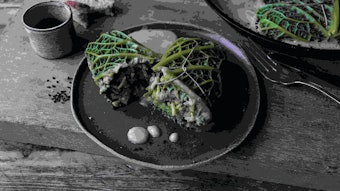Eucalyptus citriodora Oil
Tonzibo et al. (1998) compared the composition of oils produced from fresh and dried leaves of Eucalyptus citriodora Hook. from the Ivory Coast. The results of this study are shown in T-1. In a follow-up paper, Tonzibo et al. (2000) showed that the decrease in hydrocarbon content of the oil of E. citriodora produced from dried leaves with a corresponding increase in oxygenated constituents, including the conversion of citronellal to isopulegol, also was found in oils produced during different seasons of the year.
Chalchat et al. (2000) reported that leaf oils produced from E. citriodora trees grown in the vicinity of Fretomou (Mali) were found to possess the following constituents:
alpha-pinene (0.1 percent)
beta-pinene (0.3 percent)
myrcene (0.1 percent)
limonene (0.1 percent)
1,8-cineole (0.2 percent)
citronellal (77.6-78.5 percent)
neoisopulegol (1.8-1.9 percent)
linalool (0.1-0.2 percent)
isopulegol (6.3-6.4 percent)
beta-caryophyllene (0.5 percent)
iso(iso)pulegol (0.1 percent)
neoiso(iso)pulegol (0.2 percent)
citronellyl acetate (1.1 percent)
gamma-elemene (0.2 percent)
geranyl acetate (0.3 percent)
citronellol (1.8 percent)
2-phenethyl acetate (0.1 percent)
methyl eugenol (2.2-2.3 percent)










